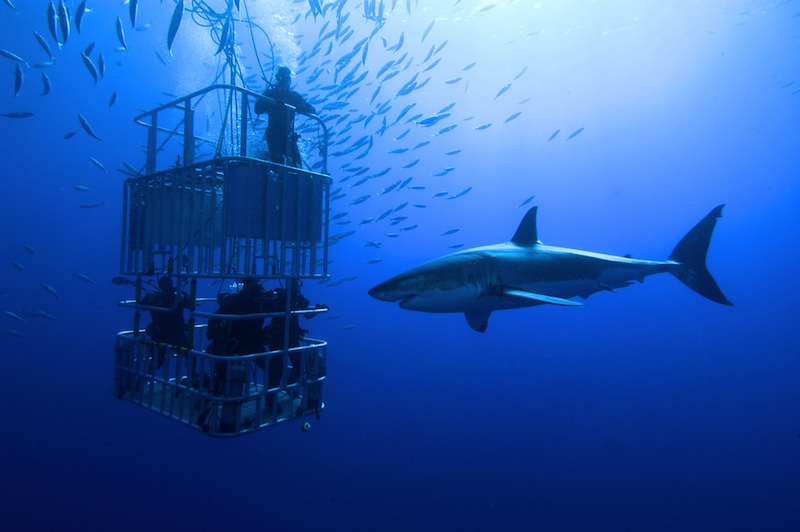
People put themselves in shark cages, go live with grizzly bears, snuggle with adult lions and even give birth alongside wild dolphins. This desire to connect with the wild seems so intense that some people risk life and limb in its pursuit.
But why do people feel so drawn to the untamed world?
That need for connection with the wild is part of human nature, but wild-animal chasing may also stem from isolation or machismo, psychologists say. Regardless of the reason, intrusive forays into wild animals' environments often do more harm than good, for both the people and animals involved, experts say. [Understanding the 10 Most Destructive Human Behaviors]
Connection to Nature
People have a deep-seated need to connect to nature, said ethologist Marc Bekoff, the author of "Why Dogs Hump and Bees Get Depressed" (New World Library, 2013).
This desire to form emotional connections with non-human living creatures, a term dubbed biophilia by the biologist E.O. Wilson, has only gotten stronger as humans have traded forest-dwelling for office cubicles and concrete jungles, said Susan Clayton, a psychology and environmental studies researcher at the College of Wooster in Ohio.
Many people also have a sense that there is a non-human, transcendent spirit that suffuses the world, and feel that they can get in touch with that spirit by getting close to wild animals, Clayton said.
Get the world’s most fascinating discoveries delivered straight to your inbox.
And as humans live in an increasingly virtual world, physical interactions with nature can fill a need for direct interaction.
"Animals can serve to recreate that," Clayton said.
Ego boost
Getting close to wild animals can also validate people's machismo or quest for adventure.
"Before the advent of modern societies, some of the biggest threats to us were wild animals, so proving yourself against a wild animal can still be a very affirming thing to do," Clayton told Live Science.
It can also make people feel more empowered. Many individuals who have gone whale or wolf watching say they feel singled out or honored by the animal, Clayton said.
Bad examples
But men like the late Crocodile Hunter Steve Irwin, the late Grizzly Man Timothy Treadwell and other wild animal chasers send mixed messages, Bekoff said.
For instance, a video recently went viral of wildlife conservationist Kevin Richardson wrestling and hugging wild, grown lions that he had helped raise. A photo of another conservationist hugging the lioness he saved similarly spread around the Web.
Such videos leave Bekoff torn.
"It shows these animals remember. It shows they are emotional beings," Bekoff told Live Science. "But I'm also afraid it could really be misused and somebody could get hurt."
House cats may be loving and strongly bonded to their owners, but even these domesticated felines have been known to playfully nip an ankle or bat a face from time to time. But housecats, unlike lions, are domesticated and typically weigh just 10 pounds (4.5 kilograms). One swipe from a loving, but overly playful lion could have much deadlier consequences, and could then trigger their deep-seated killer instincts, Bekoff said.
Treadwell's love of grizzly bears didn't end well for him: the Grizzly Man and his girlfriend were eventually eaten after years of living amidst the creatures. Irwin's exploits didn't turn out any better, as he was killed by a stingray in 2006.
Popular wild-animal chasers also negatively influence the decisions of people who have much less preparation. For instance, Bekoff's friend's 6-year-old child tried to approach a rattlesnake on a hike and cited Irwin's exploits as proof that it was okay, Bekoff said.
Intrusion
Attempts to get so close to wild animals can also be intrusive. Activities like giving birth amidst wild dolphins or baiting sharks from inside a cage "set all the wrong examples," Bekoff said.
Clayton says that some experiences can have positive impacts, however, by reminding humans to care about the natural world and to value things that humans didn't directly manufacture.
Still, many of these forays into an animal's natural environment wind up harming the very animals that humans want to get close to.
"It's probably never good for the animals, and it's probably often bad for them," Clayton said.
Follow Tia Ghose on Twitterand Google+. Follow Live Science @livescience, Facebook & Google+. Original article on Live Science.

Tia is the editor-in-chief (premium) and was formerly managing editor and senior writer for Live Science. Her work has appeared in Scientific American, Wired.com, Science News and other outlets. She holds a master's degree in bioengineering from the University of Washington, a graduate certificate in science writing from UC Santa Cruz and a bachelor's degree in mechanical engineering from the University of Texas at Austin. Tia was part of a team at the Milwaukee Journal Sentinel that published the Empty Cradles series on preterm births, which won multiple awards, including the 2012 Casey Medal for Meritorious Journalism.


